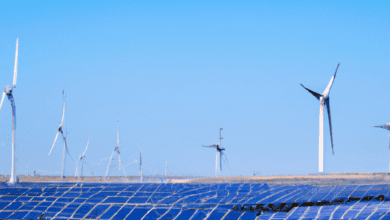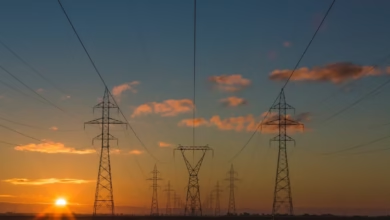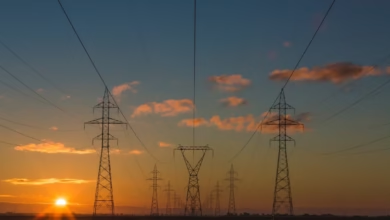Maximizing Energy Efficiency: Innovative Techniques and Technologies for a Sustainable Future

As the world grapples with the pressing challenges of climate change and energy security, the need for energy efficiency has never been more critical. With global energy trends shifting rapidly, innovative techniques and technologies are emerging to address energy waste and promote sustainability. From smart grids that optimize energy distribution to advanced carbon capture methods, these innovations are paving the way for a cleaner energy future. In addition to traditional fossil fuels and nuclear energy, renewable energy sources such as solar power, wind energy, hydropower, and bioenergy are playing a pivotal role in the energy transition, supported by energy storage solutions that enhance reliability and efficiency. This article delves into the multifaceted landscape of energy efficiency, exploring how these technologies and strategies shape energy markets, influence energy policy, and drive investments in the sector. Join us as we uncover the vital role of energy innovations in fostering a sustainable, resilient, and economically viable energy future.
- 1. Innovative Techniques for Enhancing Energy Efficiency: From Smart Grids to Carbon Capture
- 2. The Role of Renewable Energy and Energy Storage in the Global Energy Transition
- 3. Exploring Energy Innovations: How Fossil Fuels, Nuclear Energy, and Green Energy Technologies Shape Future Energy Markets
1. Innovative Techniques for Enhancing Energy Efficiency: From Smart Grids to Carbon Capture
Innovative techniques for enhancing energy efficiency are playing a crucial role in the ongoing energy transition. As we strive to reduce energy waste and combat climate change, various technologies and strategies are emerging to optimize our energy systems. One of the most significant advancements is the development of smart grids. These advanced energy networks utilize digital communication technology to monitor and manage energy flows more efficiently, allowing for better integration of renewable energy sources like solar power and wind energy. By optimizing the distribution of energy, smart grids enhance energy security and facilitate the use of distributed energy resources.
In addition to smart grids, carbon capture technology is becoming increasingly vital as a means to mitigate emissions from fossil fuel use. By capturing carbon dioxide produced during energy generation and storing it underground or repurposing it, we can significantly reduce the greenhouse gas footprint of thermal energy and other fossil fuel-based sources. This innovative technique complements the growth of green energy options, such as hydropower and bioenergy, enabling a balanced energy portfolio.
Energy storage systems also play a crucial role in enhancing energy efficiency. These technologies help manage the intermittent nature of renewable energy, ensuring that excess energy generated during peak production times can be stored and utilized later. Advancements in battery technology, particularly for electric vehicles, are pushing the boundaries of energy storage, making it more economically viable and accessible.
Furthermore, the ongoing research and development in hydrogen energy presents a promising avenue for improving energy efficiency. Hydrogen, when produced using renewable energy, can serve as a clean fuel alternative to fossil fuels and can be used in various sectors, from transportation to heating. As energy markets evolve, energy policy must adapt to foster innovations in energy economics, paving the way for increased energy investments in renewable technologies.
By leveraging these innovative techniques and technologies, we can enhance energy efficiency, support the growth of renewable energy, and ultimately transition towards a more sustainable global energy future. The ongoing focus on energy R&D is essential to ensure that we remain at the forefront of energy innovations, preparing for future energy challenges and opportunities.
2. The Role of Renewable Energy and Energy Storage in the Global Energy Transition
The global energy transition is gaining momentum as nations strive to reduce reliance on fossil fuels and enhance energy efficiency. Renewable energy plays a pivotal role in this transformation, with technologies such as solar power, wind energy, hydropower, and bioenergy leading the charge. These green energy sources not only provide a cleaner alternative to conventional energy systems but also contribute to energy security by diversifying energy markets and reducing dependency on energy imports.
Energy storage technologies are equally crucial in this transition. As the production of renewable energy can be intermittent, effective energy storage solutions ensure a stable and reliable energy supply. Innovations in battery technology, such as those supporting electric vehicles and smart grids, are enhancing the capacity to store excess energy generated during peak production times. This stored energy can then be dispatched when demand surges, thereby optimizing energy efficiency and minimizing waste.
Furthermore, the integration of renewable energy and energy storage into existing energy infrastructures supports the development of distributed energy systems. These systems can enhance energy accessibility and reduce transmission losses, which are significant contributors to energy waste. As countries invest in energy R&D, the potential for thermal energy, hydrogen energy, and carbon capture technologies can further facilitate the shift towards a more sustainable energy landscape.
Energy policy also plays a critical role in this transition. Governments worldwide are adopting policies that encourage energy investments in renewables and storage solutions while phasing out subsidies for fossil fuels. Such measures not only promote energy innovations but also align with global energy trends aimed at achieving climate change goals.
In summary, the synergy between renewable energy and energy storage technologies is essential for driving the global energy transition. By prioritizing energy efficiency and enabling sustainable energy sources, nations can create a resilient energy framework that meets the challenges of tomorrow while addressing the pressing issues of climate change and energy economics.
3. Exploring Energy Innovations: How Fossil Fuels, Nuclear Energy, and Green Energy Technologies Shape Future Energy Markets
The future of energy markets is being significantly shaped by a diverse range of innovations across fossil fuels, nuclear energy, and green energy technologies. As the world grapples with climate change and seeks to enhance energy efficiency, these sectors are evolving to meet the demands of a sustainable energy transition.
Fossil fuels continue to play a crucial role in the global energy landscape. While their use is declining in many regions due to environmental concerns, advancements in carbon capture technologies are being developed to mitigate emissions from traditional fossil fuel sources. This innovation not only aids in reducing greenhouse gases but also supports energy security by allowing countries to maintain energy exports while transitioning to cleaner alternatives.
Nuclear energy remains a vital component of the energy mix, offering a reliable source of thermal energy with low carbon emissions. Recent innovations in nuclear technology, including small modular reactors (SMRs), promise to enhance safety and efficiency while addressing energy economics concerns. These developments may attract energy investment and support energy policy aimed at reducing reliance on fossil fuels.
On the front of renewable energy, technologies such as solar power, wind energy, hydropower, and bioenergy are rapidly advancing. The integration of these green energy sources into energy markets is facilitated by innovations in energy storage and smart grids. These technologies enhance the reliability and efficiency of energy transportation, allowing for distributed energy systems that can meet local demands while contributing to global energy trends.
Moreover, the emergence of hydrogen energy presents exciting possibilities for the future. Hydrogen can be produced using renewable sources, providing a clean alternative for energy transportation and storage. The advancement of electric vehicles (EVs) and their integration with renewable energy sources further underscores the importance of innovation in shaping energy markets.
As we look towards the future, energy R&D will play a critical role in developing effective solutions to balance energy efficiency, climate change mitigation, and energy security. By fostering collaboration between public and private sectors, countries can ensure a resilient energy landscape that adapts to changing conditions while prioritizing sustainable practices.
In conclusion, the exploration of energy innovations across fossil fuels, nuclear energy, and renewable technologies is essential for shaping future energy markets. By investing in these sectors and embracing new technologies, we can create a more sustainable and efficient energy future that meets the needs of both current and future generations.
In conclusion, the journey toward enhanced energy efficiency is more critical than ever as we navigate the complexities of modern energy markets and address the pressing challenges of climate change. By embracing innovative techniques such as smart grids and carbon capture, we can significantly reduce energy waste and improve overall energy security. The integration of renewable energy sources, including solar power, wind energy, and hydropower, alongside advancements in energy storage technologies, will play a pivotal role in the global energy transition.
As we explore the interplay between fossil fuels, nuclear energy, and green energy technologies, it is essential to recognize their collective impact on energy policy and investment. The ongoing evolution of energy innovations, such as hydrogen energy and electric vehicles, will shape the future of energy economics and transportation. Furthermore, distributed energy systems will empower communities to take charge of their energy consumption, fostering resilience and sustainability.
Ultimately, as we continue to invest in energy R&D and adapt to global energy trends, we can create a more sustainable and efficient energy landscape that not only meets current demands but also secures a cleaner, greener future for generations to come. By prioritizing energy efficiency and embracing these transformative technologies, we can pave the way for a smarter, more sustainable energy future.





